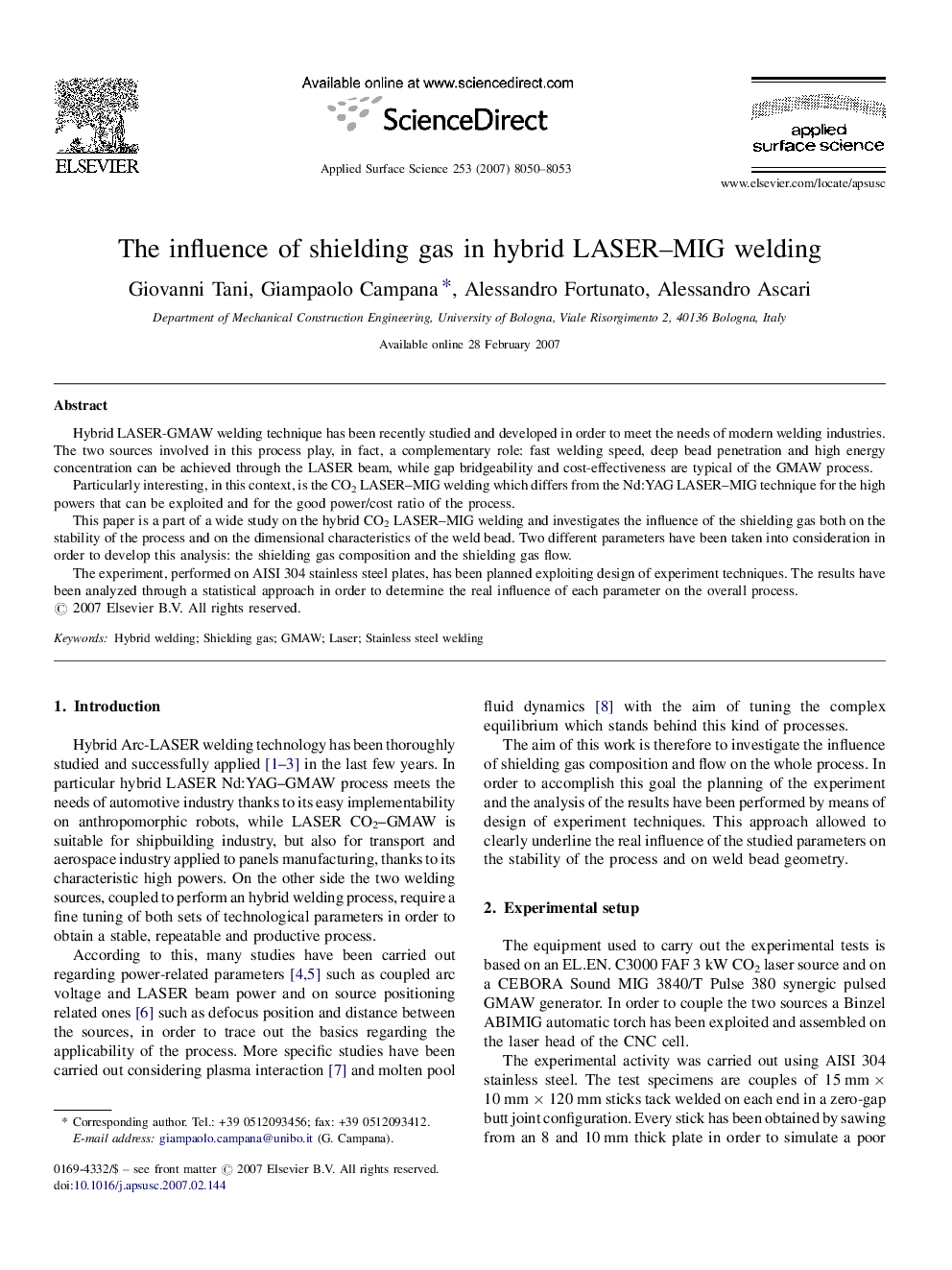| Article ID | Journal | Published Year | Pages | File Type |
|---|---|---|---|---|
| 5369621 | Applied Surface Science | 2007 | 4 Pages |
Hybrid LASER-GMAW welding technique has been recently studied and developed in order to meet the needs of modern welding industries. The two sources involved in this process play, in fact, a complementary role: fast welding speed, deep bead penetration and high energy concentration can be achieved through the LASER beam, while gap bridgeability and cost-effectiveness are typical of the GMAW process.Particularly interesting, in this context, is the CO2 LASER-MIG welding which differs from the Nd:YAG LASER-MIG technique for the high powers that can be exploited and for the good power/cost ratio of the process.This paper is a part of a wide study on the hybrid CO2 LASER-MIG welding and investigates the influence of the shielding gas both on the stability of the process and on the dimensional characteristics of the weld bead. Two different parameters have been taken into consideration in order to develop this analysis: the shielding gas composition and the shielding gas flow.The experiment, performed on AISI 304 stainless steel plates, has been planned exploiting design of experiment techniques. The results have been analyzed through a statistical approach in order to determine the real influence of each parameter on the overall process.
